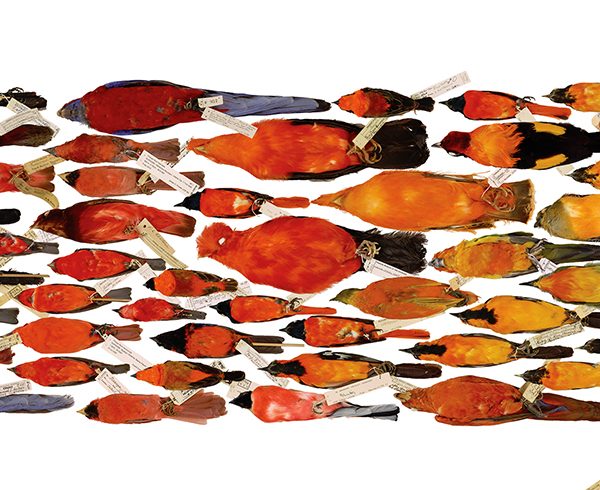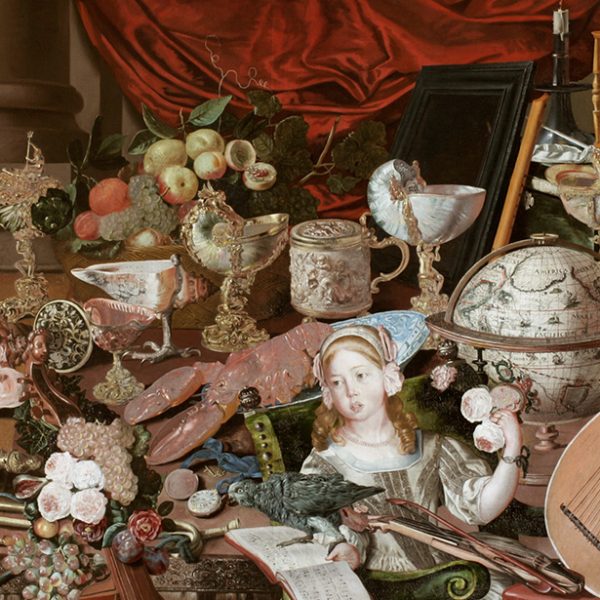Notes From the Field: Sculpture Victorious at the YCBA
Ivy Sanders Schneider–
The Sculpture Victorious exhibition at the YCBA greets viewers with two busts of Queen Victoria. The first is of Victoria at 21 – positioned at eye level, she appears youthful and pretty, her face bright, her shoulders exposed. The second bust, behind and to the right of the first, is of Victoria at 68. Three times the size of the first, it sits on an elevated pedestal, regal and impressive, gazing sternly into the distance above the viewer’s head. The sensual, realistic simplicity of the first bust is transformed, in the second, into an imposing presence, literally larger than life.
In technique, both sculptures borrow from classical Greco-Roman traditions, but in presentation they are recognizably Victorian; the women could only be Queen Victoria herself, and both hide Garter Stars, representing the highest order of chivalric English knighthood, in the folds of their dresses, and the sculptures owe much to Britain’s position as the first modern industrialized and urbanized nation. Increased production led to increased leisure time, allowing a new class of artists to emerge and utilize new techniques that were themselves made possible by leaps in technology. These artists worked to fill a growing demand for sculptures as the nation’s economic development produced newly rich patrons, and financed the construction of new locations to display new works. Of course, these sculptures owe much to antiquity, too, and the exhibition is a conversation between epochs. Some sculptures depict classical or medieval figures created with so much attention to detail as to be unmistakably Victorian, while others are more classical in appearance, but depict contemporary figures.
This second category – classically rendered sculptures dealing with contemporary issues – is exemplified by the three slave women around the corner from the two Victorias. The first, Hiram Power’s Greek Slave, is naked, resting against a pillar, hands bound by delicate marble chains. Although clearly an Argive, her position mirrors the enslavements of Africans occurring in America, Power’s home country. A second sculpture deals with the issue of American slavery more explicitly – John Bell’s American Slave depicts just that; in bronze instead of marble, her silver chains stand out against her burnished skin. The third sculpture in the series is Harriet Hosmer’s Zenobia, Queen of Palymyra, and although she is fully dressed, with a crown on her head, the detail in the folds of her gown and the chain draped between her two hands visually link her to the previous two statues.
This repetition across media, too, is a key aspect of the exhibition, which, at times, is as much about the art of exhibition and replication as it is about the physical sculptures. Power’s Greek Slave is first mirrored in its two statue contemporaries, and then again on the wall behind it, where a quilt contains a small red silhouette of the bound woman. Farther down the wall sits a 19th century lithograph of the sculpture when it was first displayed to the public, in addition to calotypes, daguerreotypes, and an image viewable through a wooden stereoscope that returns the sculpture’s appearance to its original three dimensions. Sculpture Victorious presents “images as a new form of sculptural display,” noting how people would go to see the works in person, and then buy souvenirs – photographs or scale replicas, and in this way, too, industrialization helped support the proliferation of sculpture.
*
Sculpture Victorious is on display at the Yale Center for British Art through November 30th, and it’s exhibition catalogue, Sculpture Victorious: Art in an Age of Invention, 1873-1901 (edited by Martina Droth, Jason Edwards, and Michael Hatt) is available from the Yale Press.
And for a deeper, interactive look at sculptural monuments to Queen Victoria, explore the YCBA’s interactive website.
Ivy Sanders Schneider, a sophomore English major in Yale College, is an art & architecture intern at Yale University Press.


























